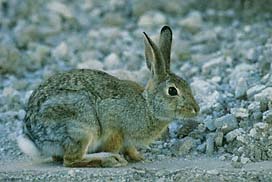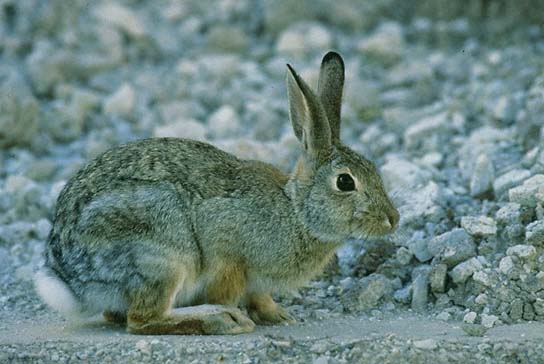Rabbits and Hares
Description
Buff-brown above; white below. Nape bright rust. Moderately long ears, sparsely furred inside. L 13 3/4–16 1/2" (350–420 mm); T 1 3/4–2 7/8" (46–74 mm); HF 3–3 7/8" (75–100 mm); E 2 1/8–2 3/4" (55–70 mm); Wt 1 3/4–2 3/4 lb (835– 1,191 g).
Similar Species
Mountain Cottontail usually has slightly shorter ears. Brush Rabbit is smaller, with shorter tail and hindlegs. Pygmy Rabbit is much smaller, with tail gray above and below. Eastern Cottontail is often larger, and has proportionally shorter ears.
Breeding
At least 2 litters per year, born year-round; 1–6 young (average 3) per litter.
Habitat
Grasslands to creosote brush and deserts.
Range
California to Texas, north to e Montana and sw North Dakota.
Discussion
Unlike most cottontails, this species seldom uses forms. In areas of sparse vegetation, it occasionally rests in the burrows of other animals, such as prairie dogs or skunks. It readily climbs sloping trees, and is thought to use logs and stumps as lookout posts after dark. The home range of the Desert Cottontail extends up to 15 acres (37 ha) for males and 9 acres (22 ha) for females. Its running speed has been timed at 15 mph (25 km/h). Grasses, mesquite, other green plants, cacti, bark, and twigs are its chief foods. The young of this species are born in a fur-lined depression.


